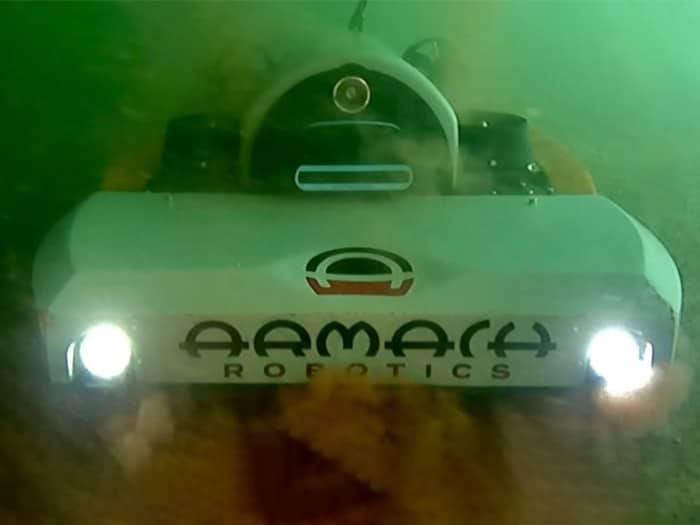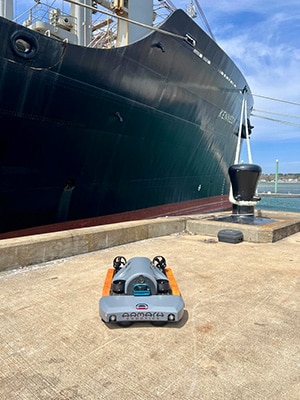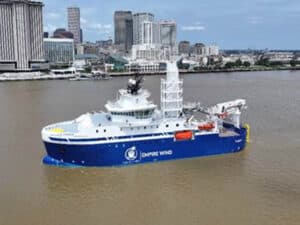
“Smaller, smarter, better” hull cleaning robot makes its debut
Written by Nick Blenkey
Armach intends to offer its hull cleaning solution am a "Ronot as a Service" basis.
Aiming to move the battle against hull bio-fouling and drag forward, Plymouth, Mass., based Armach Robotics, a spin-off from marine software pioneer Greensea Systems Inc. (Greensea), has unveiled its first post-prototype hull service robot (HSR).
The robot capitalizes on Greensea’s digital expertise to offer subscription model, proactive and robotic hull cleaning system using autonomy, intelligence and data fusion.
The robot promises to be a disruptive technology in hull cleaning, being man-portable at under 66 lb (30 kg) and around 34 inches (86 cm) long, reducing deployment costs and increasing convenience.
The robot was recently launched for its first in-water trials in Plymouth, marking an important milestone on Armach’s path to make proactive in-water cleaning a viable solution for fuel saving and optimized ship performance.
“My favorite job in this industry is working on next-generation systems,” says James Truman, Armach’s VP of engineering. “The team learns so much in the development and testing of a product for a new application but once a vehicle is sufficiently functional then the pace of design evolution slows dramatically. Designing the next generation, once you have a good understanding of the requirements and have developed proven key components, is an amazing opportunity.”
The original prototypes consisted of off-the-shelf navigation systems, a custom crawler skid, and a separate ROV all bolted together, but as Truman explains, there were more efficient ways of integrating this equipment in the finalized vehicle.
SMALLER, LIGHTER, MORE STREAMLINED
“It worked well in the prototypes but was expensive and clunky,” he says. “For the purpose-built Armach HSR we stripped out a lot of the structural and electrical overhead from the prototypes. That gave us a smaller, lighter, and more streamlined vehicle that can operate in faster water currents and on lower friction coatings. We’ve tested extensively to minimize hull-coating impact and will continue accelerated life testing and design iteration to ensure long term reliability”.

Greensea has considerable experience in intelligent control systems for underwater robots, indeed this is how Armach came into being. The vehicle is purpose built around the state-of-the art in miniaturized navigation sensors. Greensea’s OPENSEA open architecture for robotics fuses a navigation solution from the myriad sensors and provides rock-solid vehicle control.
For the HSR vehicle, Armach designed and is producing the electro-mechanical drive and cleaning components in-house because it needed not only high power-density and unique packaging but also precision control and feedback. It says that this custom approach pays dividends when it comes to in-water usability and control, along with the quality of the hull data fed back:
“The resulting performance driving on a hull as well as the free-flying stability are amazing. The networked architecture and functionality mean we can monitor or control the vehicles from anywhere in the world,” says Truman.
Armach says its “Robot as a Service” solution offers shipowners a constantly clean hull and following each cleaning operation provides an accurate georeferenced hull condition survey. The technology is not coating specific and is based on a state-of-the-art system, powered by Greensea’s autonomy, intelligence and data fusion technologies. Armach’s business model provides cleaning robots to ships, ports, harbors and established service providers on a monthly subscription basis.




